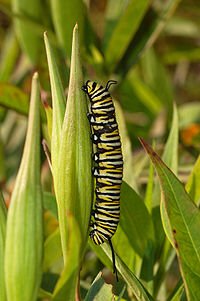
Photo from wikipedia
Insects are traditionally thought to respond to noxious stimuli in an inflexible manner, without the ability to modulate their behavior according to context. We investigated whether bumblebees’ attraction to high… Click to show full abstract
Insects are traditionally thought to respond to noxious stimuli in an inflexible manner, without the ability to modulate their behavior according to context. We investigated whether bumblebees’ attraction to high sucrose solution concentrations reduces their avoidance of noxious heat. Bees were given the choice between either unheated or noxiously heated (55 °C) feeders with different sucrose concentrations and marked by different colors. Bees avoided noxious feeders when the unheated feeders contained high sucrose concentrations, but progressively increased feeding from noxious feeders when the sucrose concentration at unheated feeders decreased. This shows a motivational trade-off of nociceptive responses. Bees used learned color cues for their decisions, and thus the trade-off was based on processing in the brain, rather than just peripheral processing. Therefore, bees can use contextual information to modulate nociceptive behavior. This ability is consistent with a capacity for pain experiences in insects.
Journal Title: Proceedings of the National Academy of Sciences of the United States of America
Year Published: 2022
Link to full text (if available)
Share on Social Media: Sign Up to like & get
recommendations!